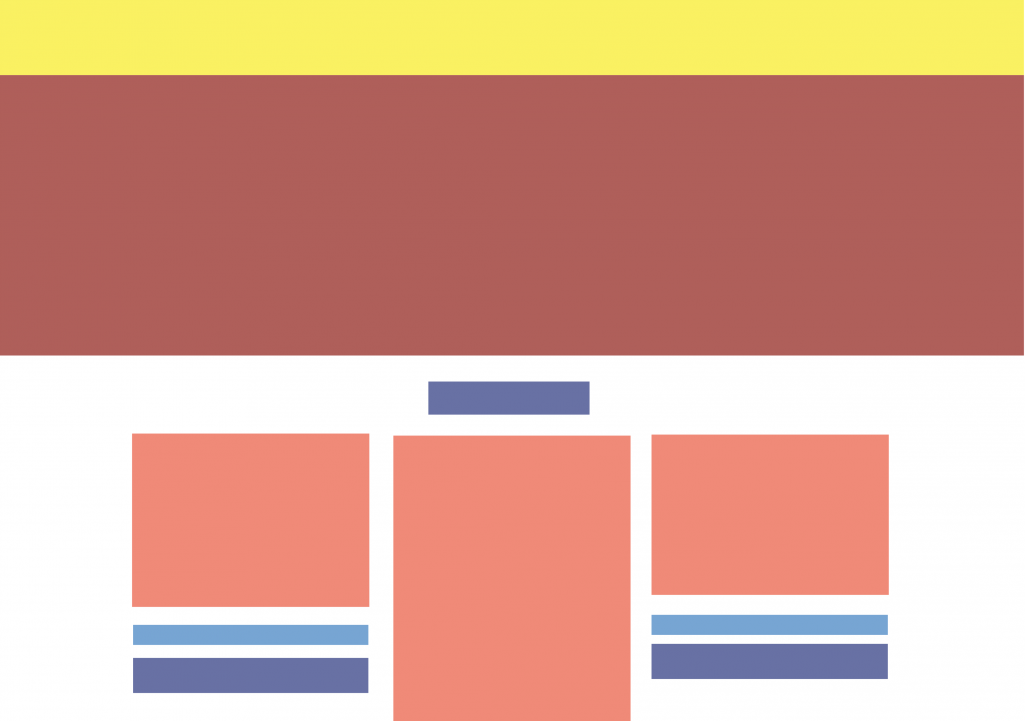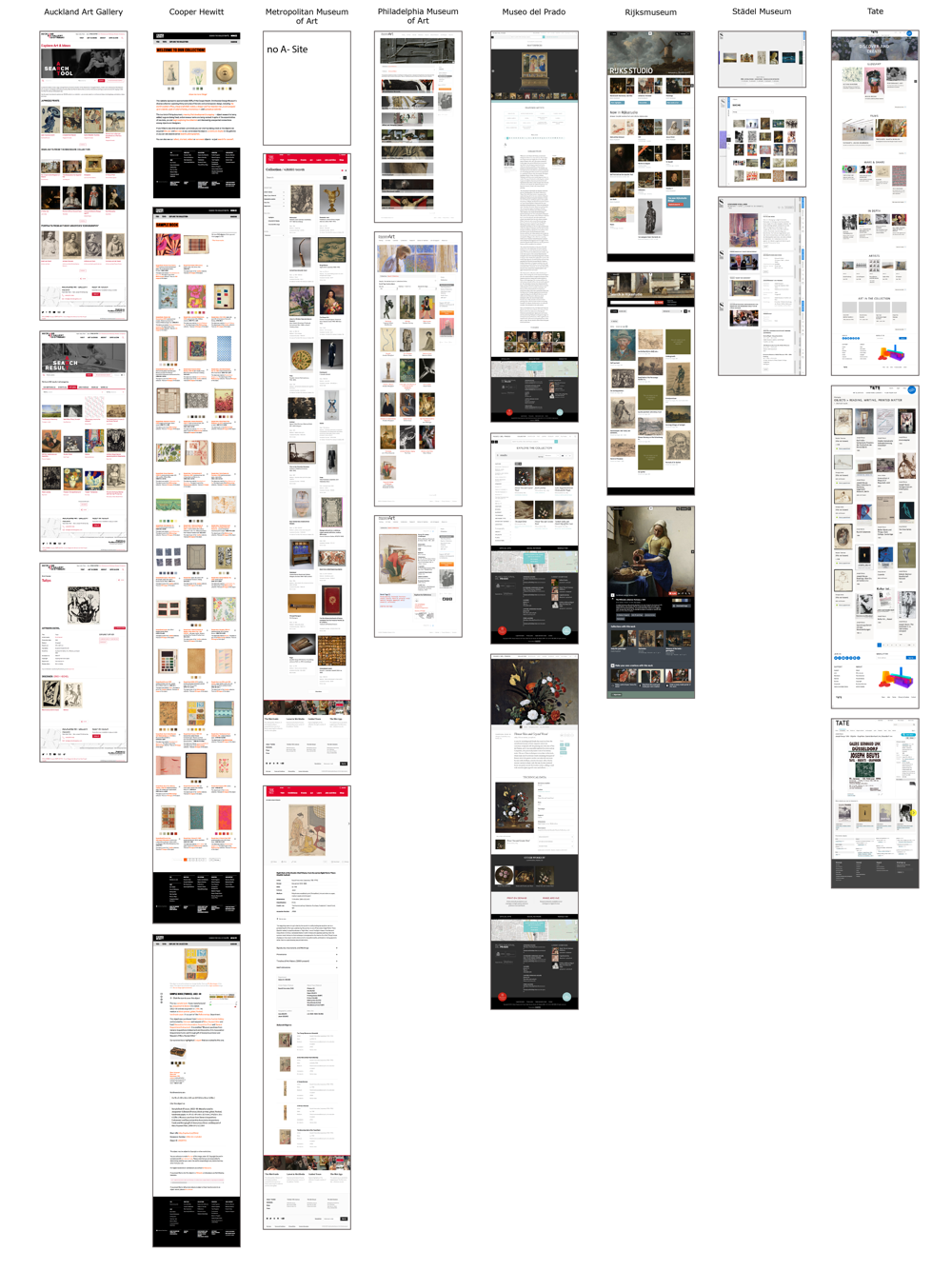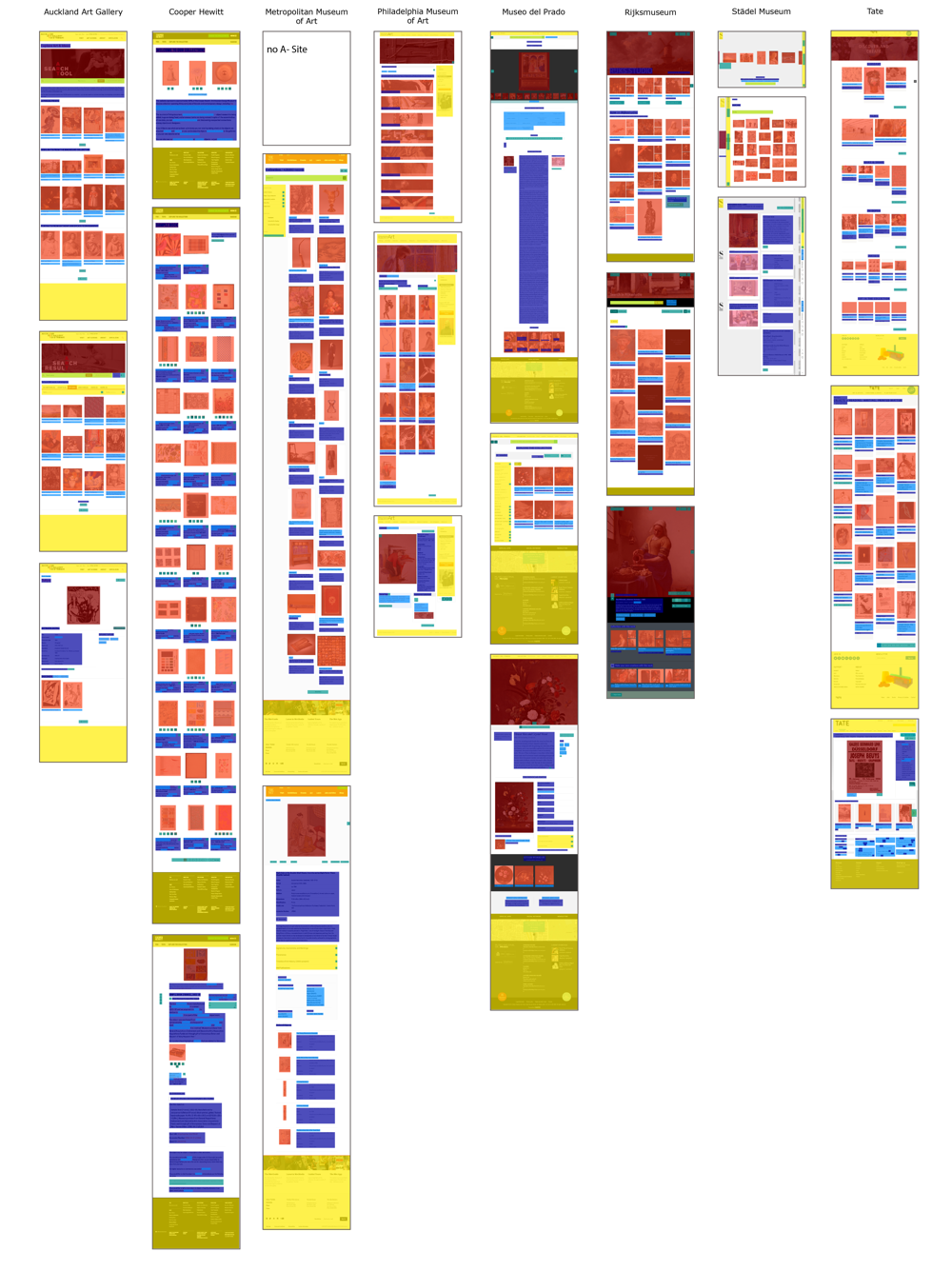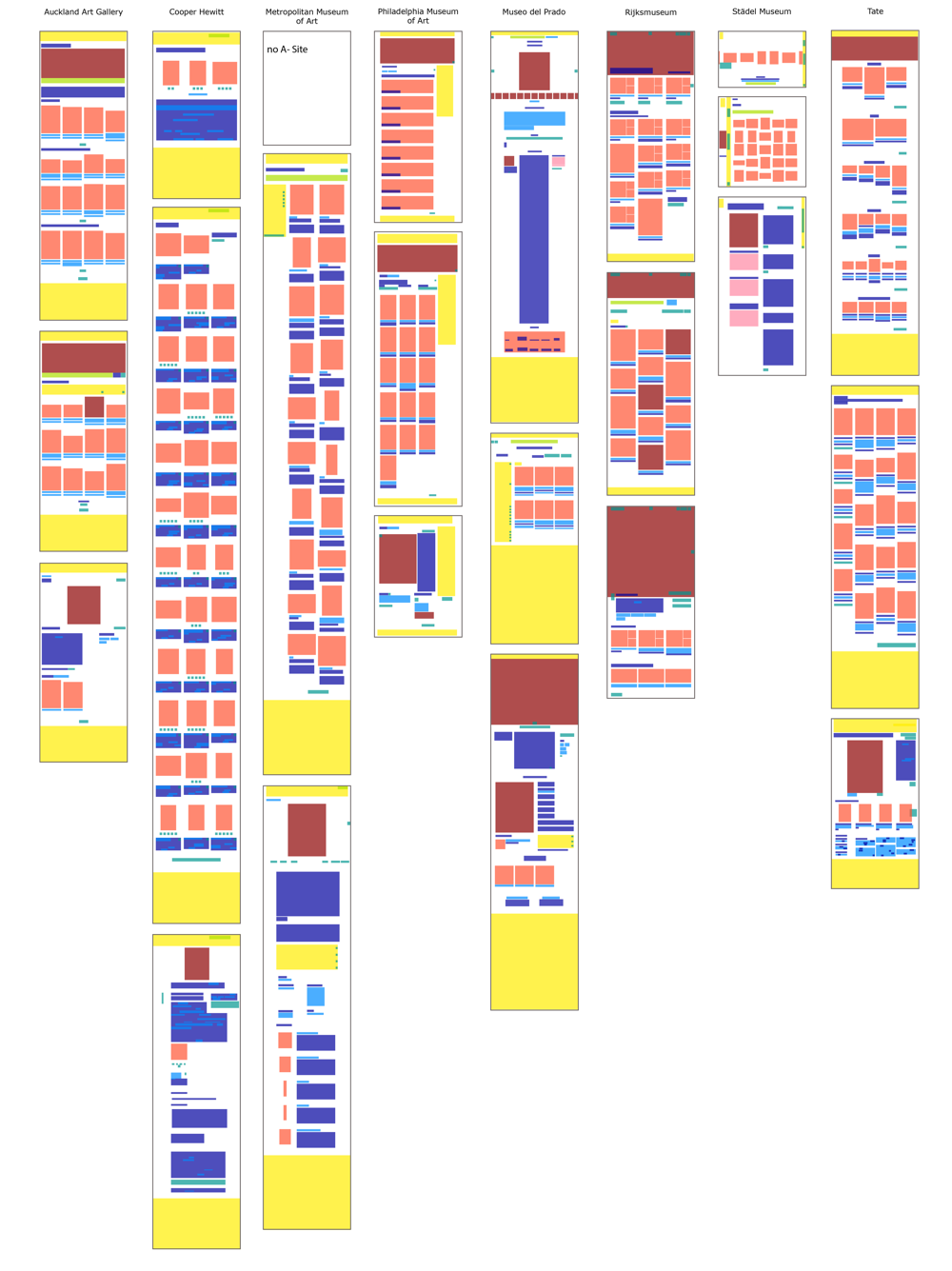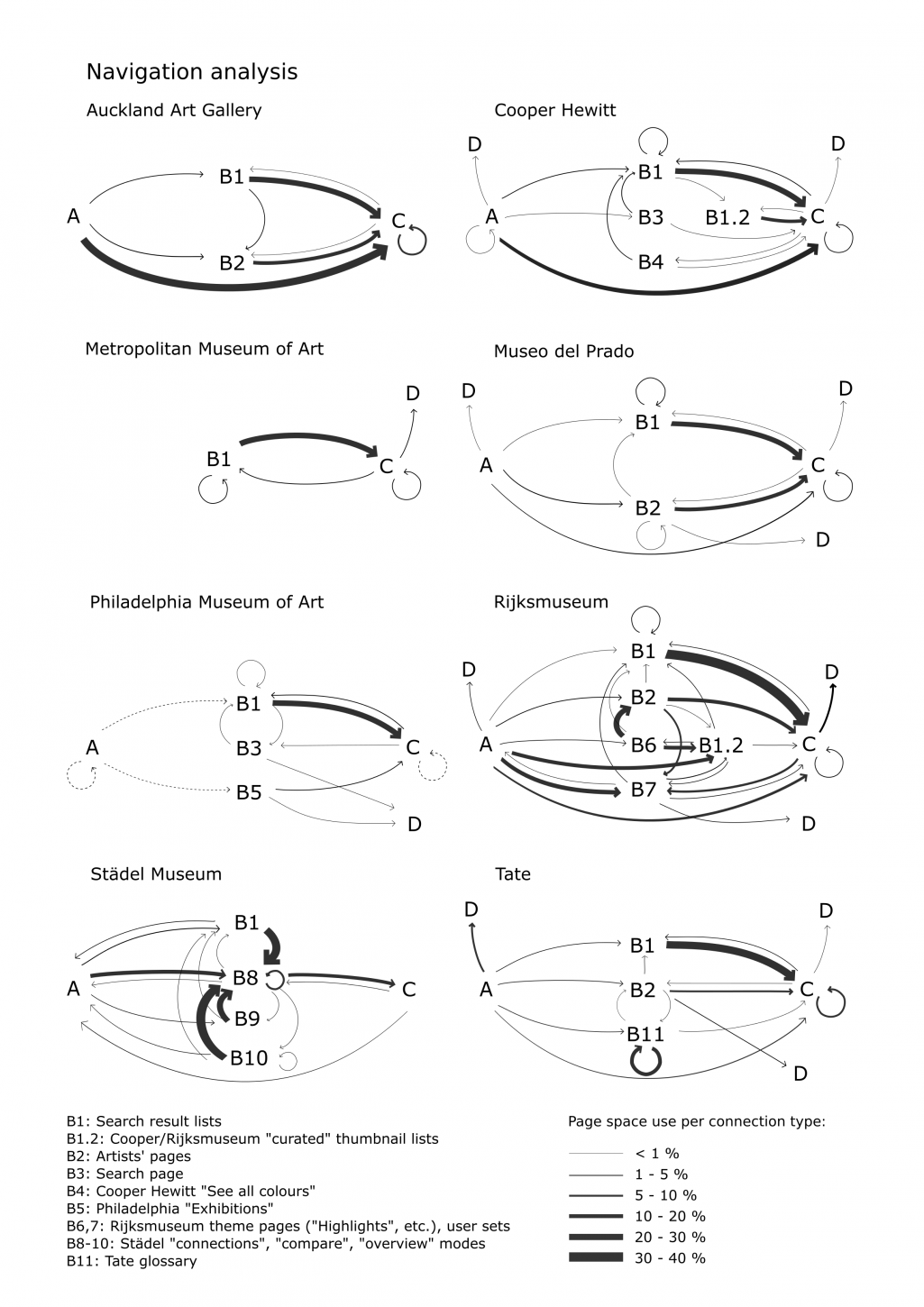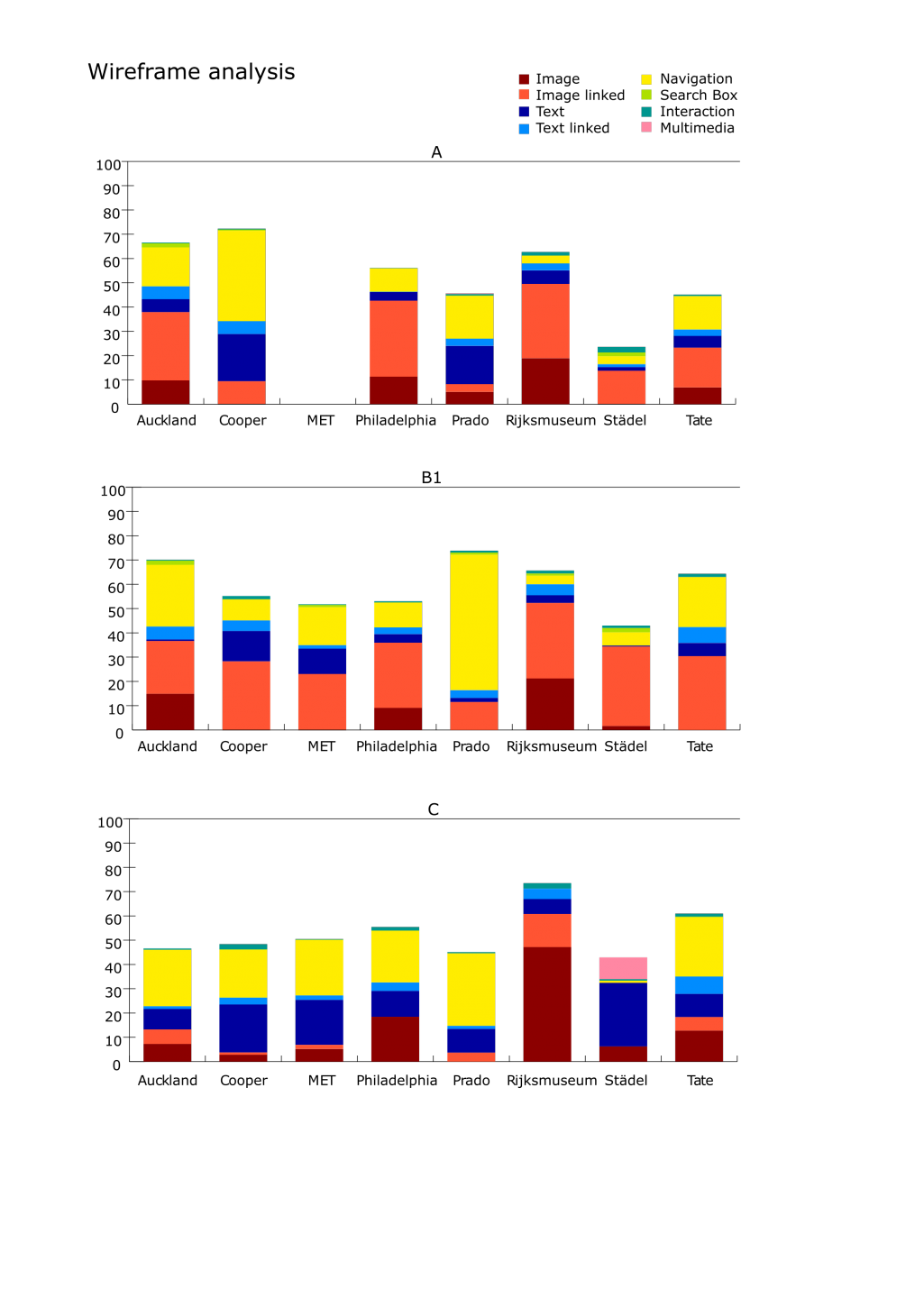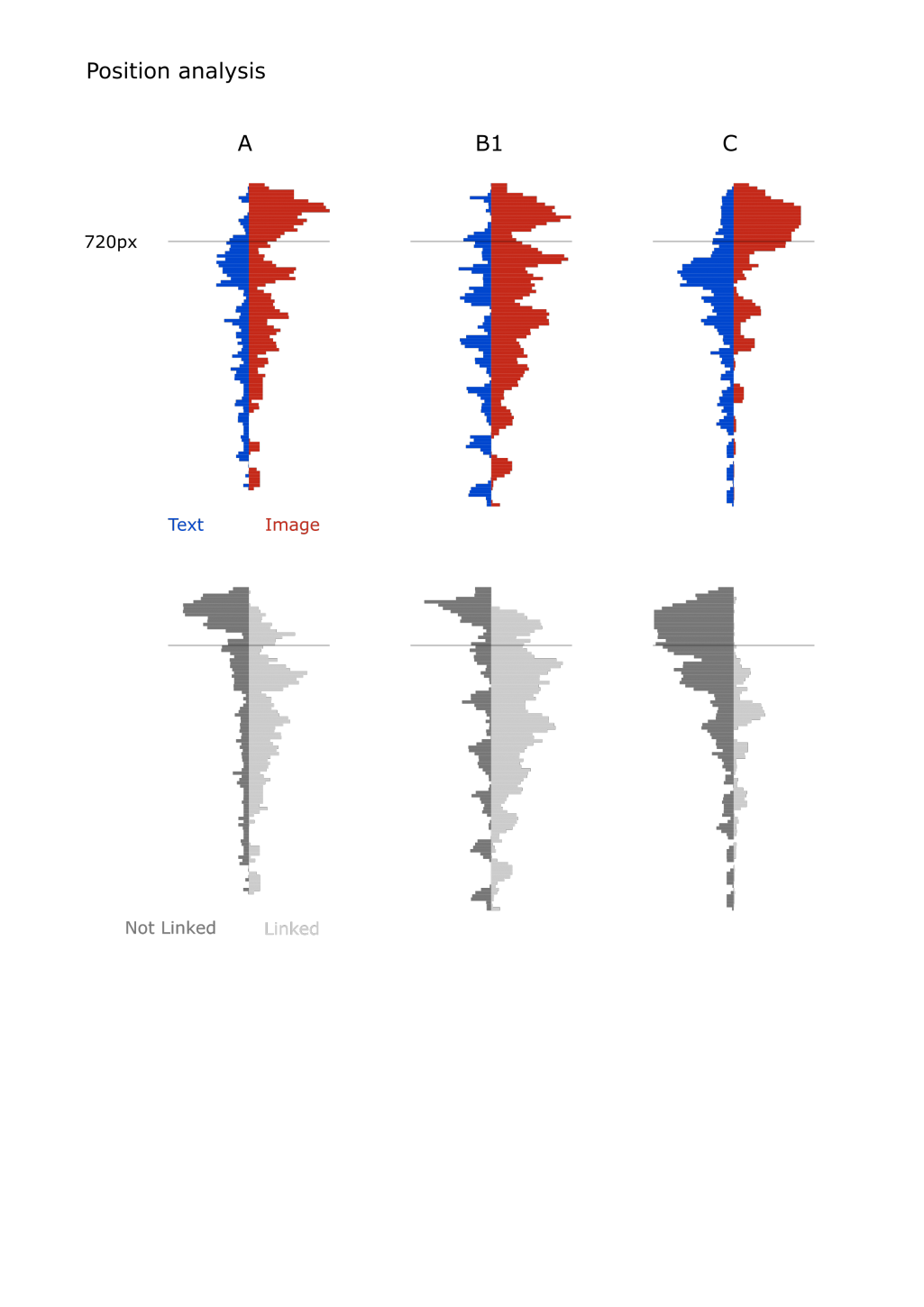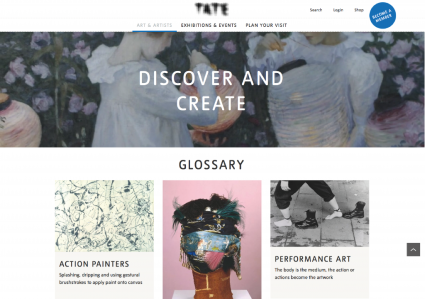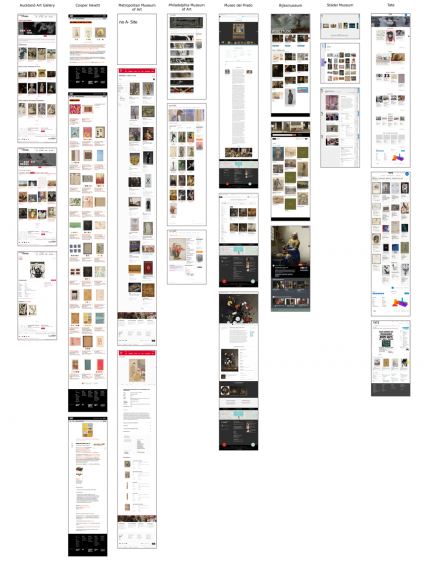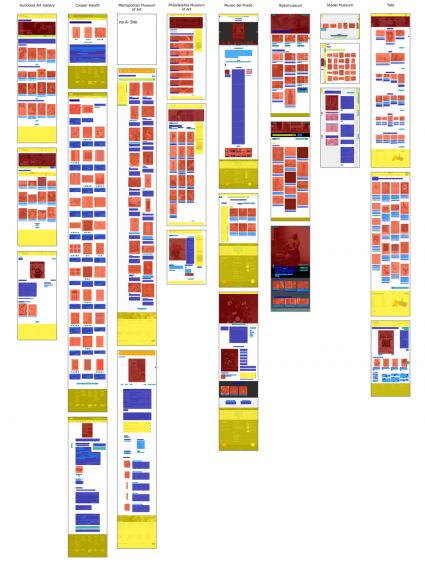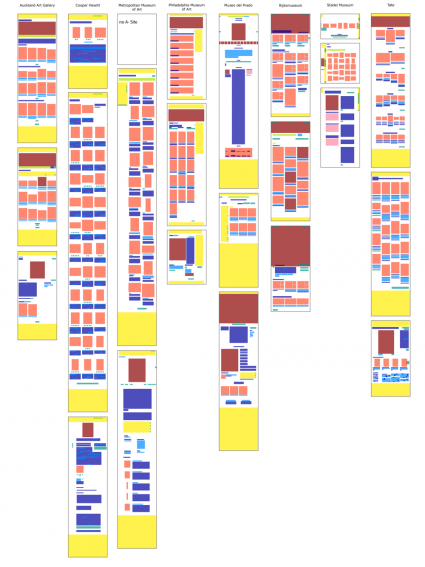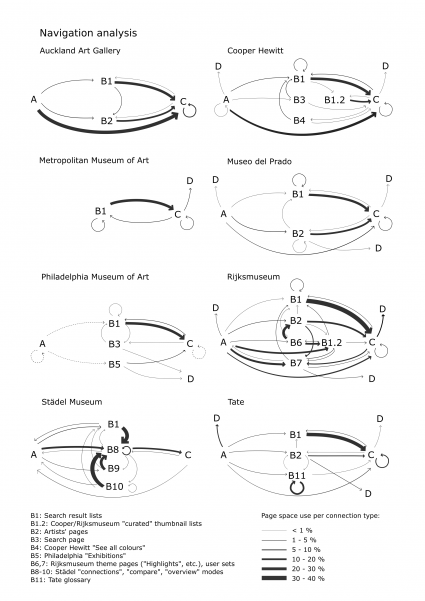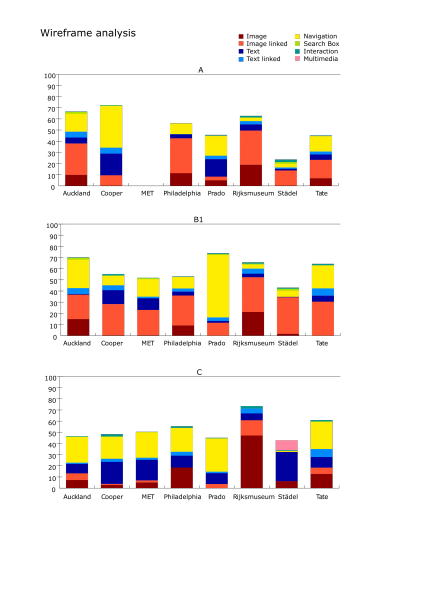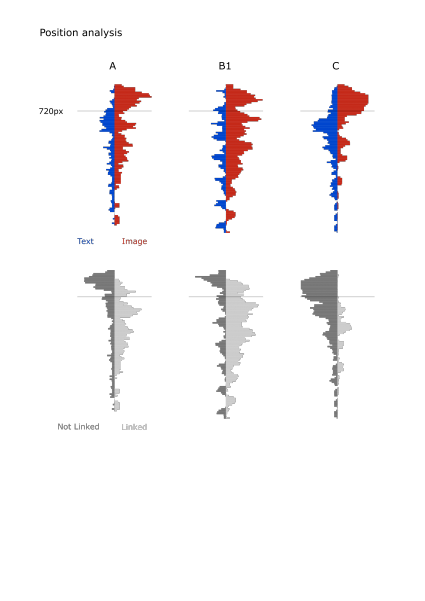Reverse information architecture How is exploration manifested in online collections of museums?
When visiting cultural collections online, the term of exploration seems to gain more and more currency. But what does it promise exactly? And how is it implemented into the web-based interfaces of digital collections of museum? To answer these questions, reverse information architecture brings together several methods for examining page elements and navigation topologies meant to support exploration.
The project started in 2014 as part of the course “Visualizing Cultural Collections”, with the aim to examine the current state of existing interfaces of digital collections of museums. In digital collections, objects are prepared and presented particularly for the Web and the ambition is to provide the entirety of a physical collection. Assuming that more and more museums are providing digital collections online, the project started with an initial analysis and overview. It was revealing that with the aim of making the rich and comprehensive data sets accessible, a so called explore mode was increasingly offered across most websites. Soon, the questions of what this explore mode meant precisely and how it was manifested in the structure of the digital collections appeared.
In the following research phase, a more concrete conceptualization of the term “exploration” was developed and four functional principles in support of exploration in digital collections were defined (view, movement, contextualization, and participation). Furthermore, a new methodology to analyze how the function of exploration is manifested in the structure and interface elements of digital collections was devised. With this unique method, the given content was investigated to examine to which degree and in what manner the functions of exploration are implemented in digital collections. The working base for the study were screenshots of eight well-known museum collections worldwide, which were analyzed with the new method we call reverse information architecture.
The method works with the visible elements and the structure of the digital collections and focuses especially on the correlation between content, design, and function. It works reversely (concerning the composition of a website) to unfold the exploratory structures and design patterns of collection websites. One part of the analysis is focused on the webpages by categorizing the individual page elements using a graphic program, while another part is working with the navigation structure of the websites and the positioning of singular elements on the pages. The outcome is not only a novel method but also a detailed analysis of the current state of digital collections of museums.


